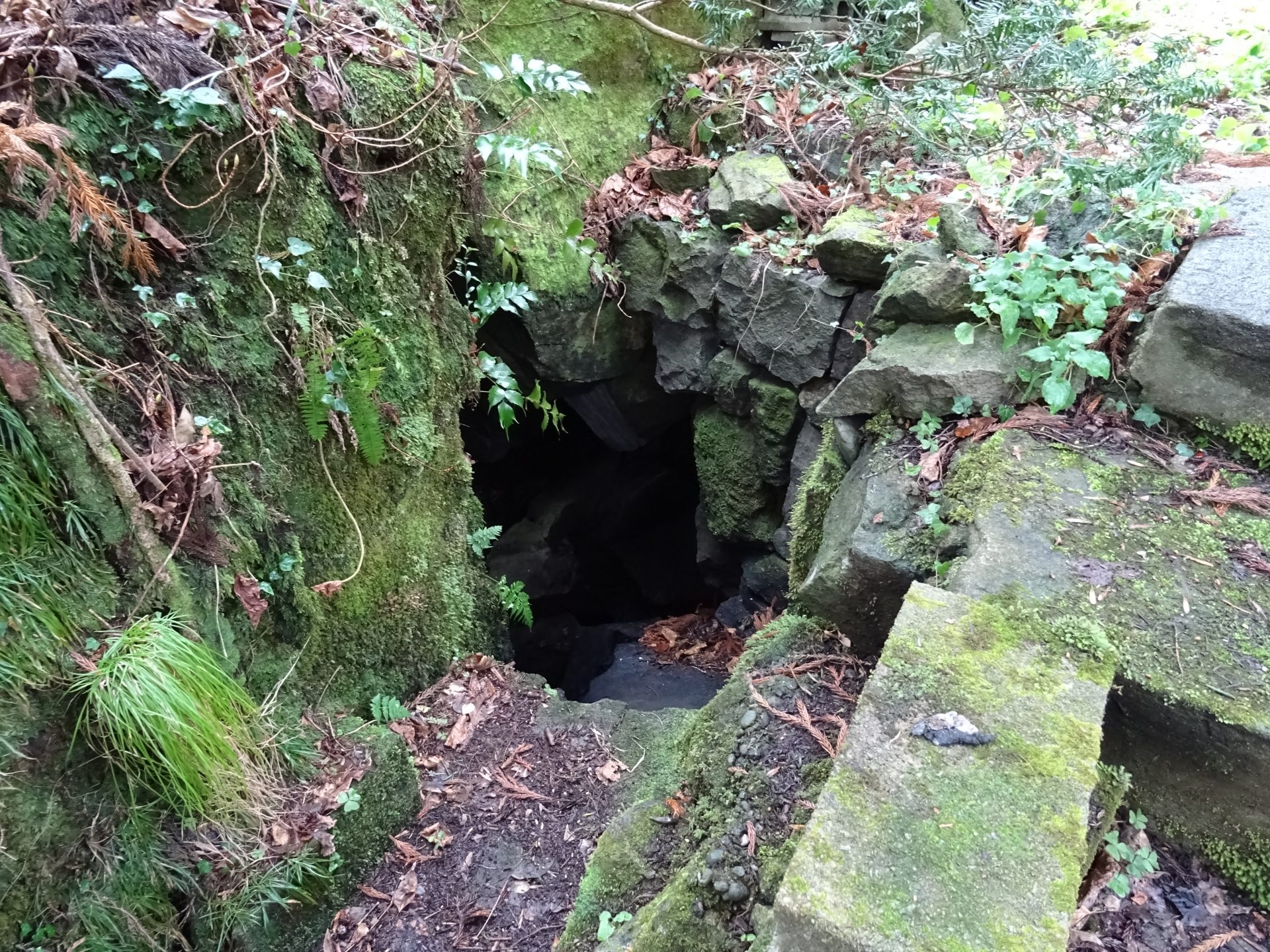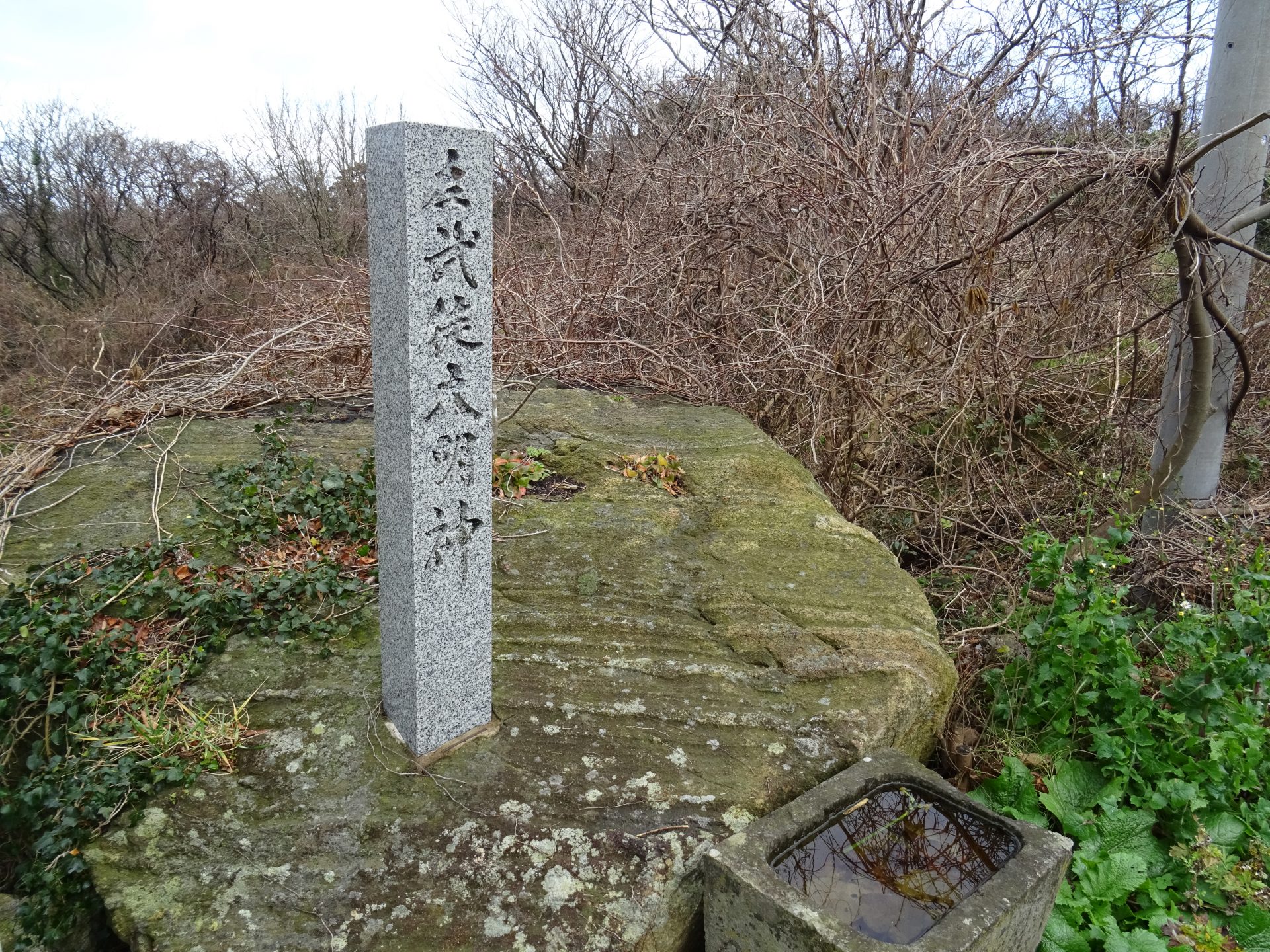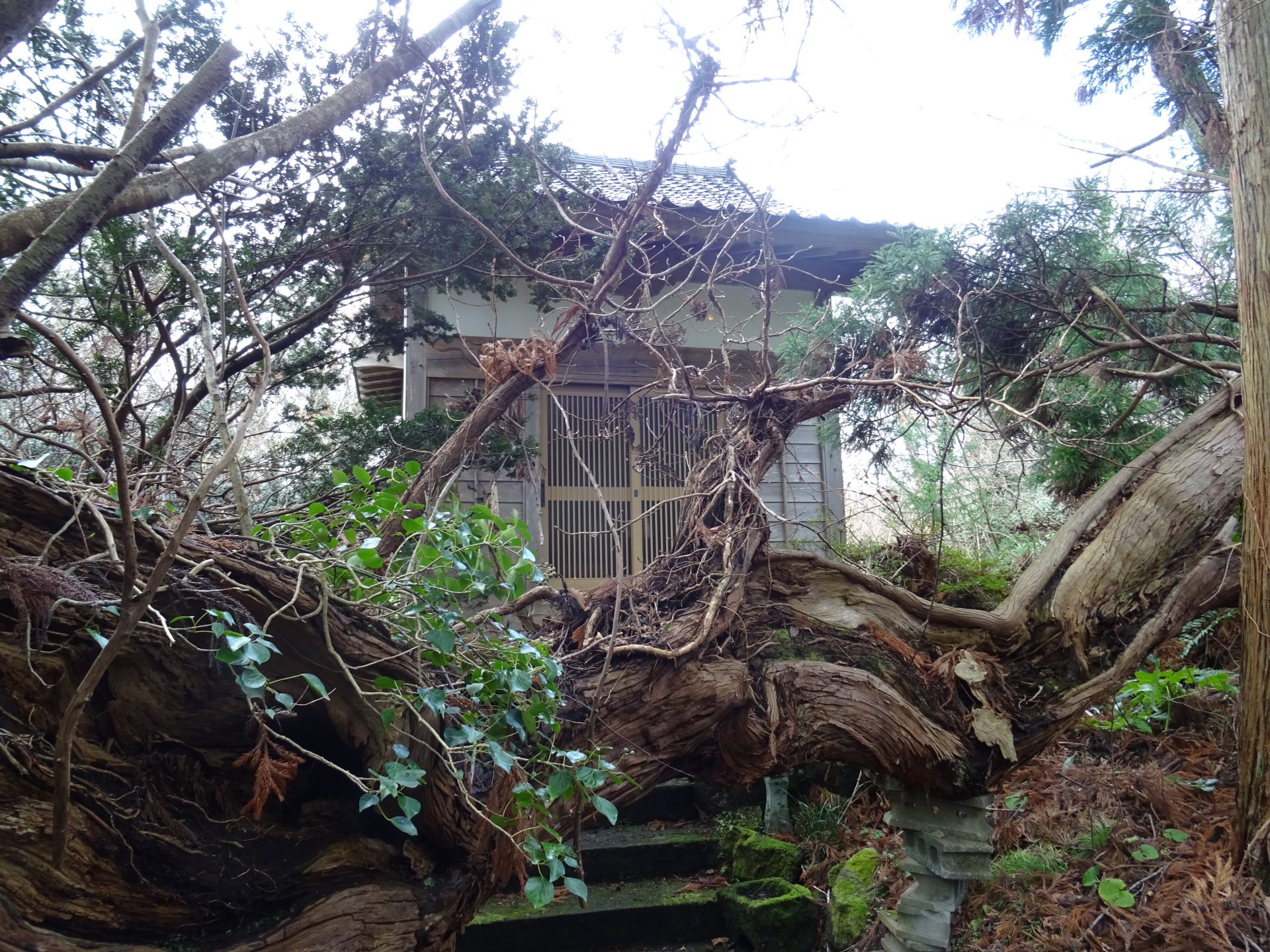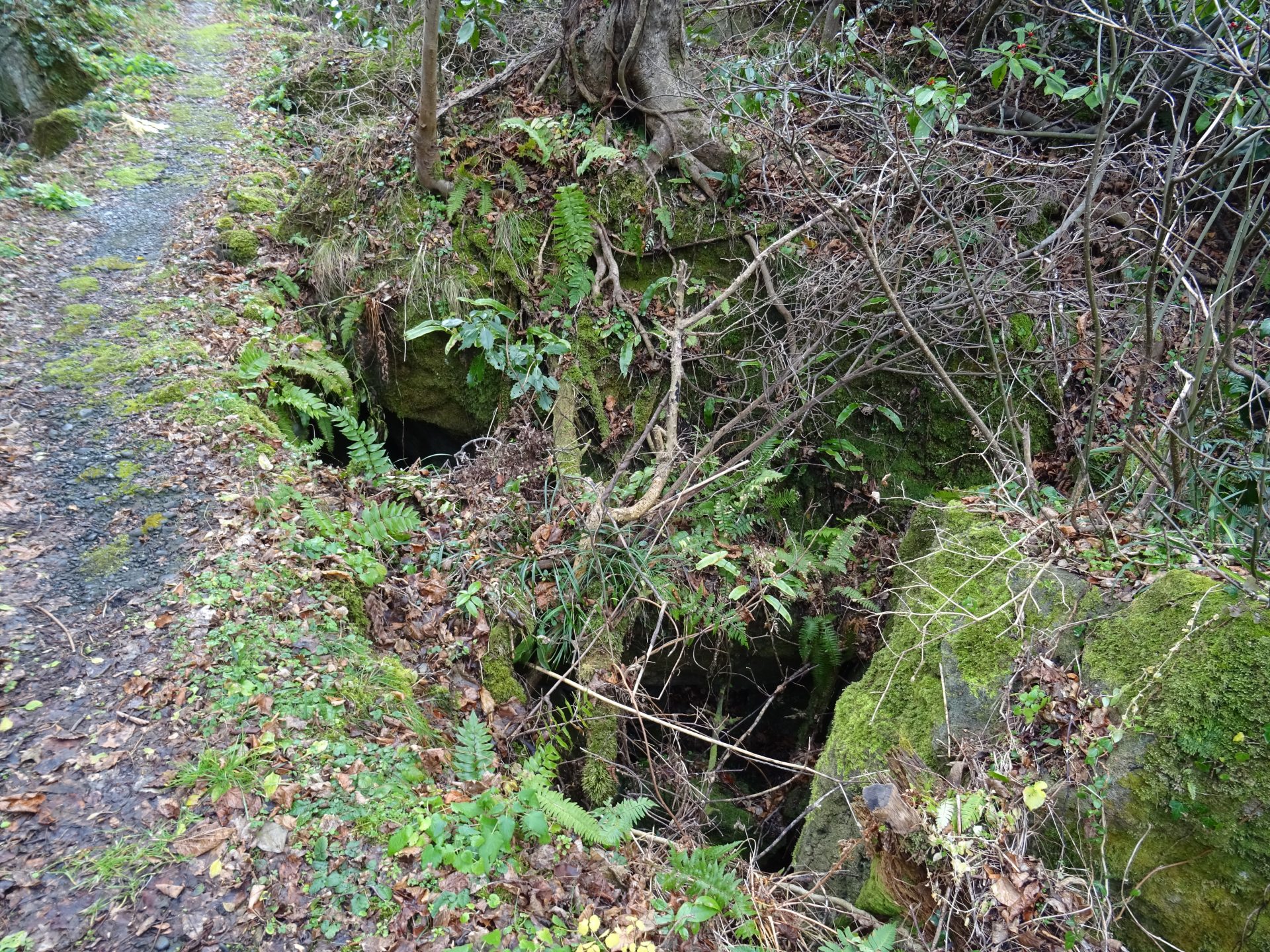Meet our Geosites
Here you can find out about geosites on Sado, a geopark that encompasses the entire island and the surrounding sea.
(日本語) 風が吹き出す穴だらけの岬!
The Wind Caves at Sabutozaki are marked by a signboard that reads “Sabutozaki” and a stone pagoda that reads “Sabuto Daimyojin” (Great Myojin). There are some torii gates that line the approach to the shrine. Walk further down the narrow and grassy path for a while, and you will find Sabuto shrine, standing in an area shaded with trees. A cedar tree that stands in front of the shrine has been bent dramatically but is still thriving, creating an interesting atmosphere.
There are many legends of mujina (raccoon dogs) on Sado Island. The master of the Sado mujina was known to be Futatsuiwa Danzaburo of the Futatsuiwa Daimyojin at Orito, Aikawa. Sabuto is one of Futatsuiwa Danzaburo’s four outstanding disciples and enshrined at this shrine. Sabuto Shrine is also known as Osugi Shrine. This name was used to honor a girl named Osugi who was buried alive when Mt. Chigyo collapsed.
Visit Sabuto shrine on a hot summer day, and you might notice a drop in temperature when you enter. What do you think causes the change in temperature? Pass under the bent cedar tree towards the shrine to find out. Do you notice the big hole in the rock to the lower left? If you look closely at this hole, you can see that it is made up of overlapping large rocks. There are several holes at this place, but this hole is one of the easiest to find in Sabutozaki. These holes are called wind caves – gaps naturally formed by overlapping rocks of different sizes. When the wind from the sea blows through these wind caves, it creates a cool breeze. You may find several holes on the path from the entrance to the shrine. Take a look around and check if you can feel the breeze!
The Sabutozaki wind caves are designated as a geosite. When Mount Chigyo behind Sabutozaki collapsed in an earthquake, it caused rocks and sediment to flow into the sea. This landslide created Sabutozaki cape. Gaps formed between the crumbled rocks at Sabutozaki, creating the wind caves we can see today. Thus, the wind caves here can be seen as geological evidence of the collapse of Mount Chigyo. Moreover, the creation of Sabutozaki Cape caused sand to accumulate, creating Iwayaguchi beach.
When viewed from Hanezaka (also known as the Z-zaka, or Z-shaped slope), you can get a beautiful panoramic view of Mount Chigyo, Sabutozaki, and the beach.
Information
| Location | 〒(日本語) 952-2203 (日本語) 佐渡市関 | ||
|---|---|---|---|
| Getting here | (日本語) 両津港から車で70分 小木港から車で98分 | Nearest bus stop | (日本語) 本線海府線 関から徒歩10分 |
| Parking | (日本語) あり(1台) | ||









